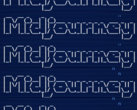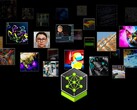A growing number of YouTube channels are publishing content generated with AI tools such as Luma, Kling, RunwayML, Sora and Synthesia. Often referred to as “AI slop”, these videos are typically low-quality, low-effort and mass-produced, offering hardly any value to viewers.
YouTube taking actions against monetisation of AI-generated videos
Although this issue has been known for a while, YouTube is finally taking meaningful action to address it. According to a report by TechCrunch, the platform is planning to update its monetisation policies. A new statement in the official guide for creator indicates that Google is going to tighten the rules governing video monetisation.
Specifically, the YouTube Partner Program (YPP) requires participating channels to upload original and authentic materials. Whilst this rule already existed, it will be enforced more strictly and consistently starting 15 July 2025. The aim is to better filter out mass-produced and repetitious videos lacking in discernable personal creative input.
In a video explaining this update, YouTube’s head of editorial Rene Ritchie stressed that this change is specifically intended to help better identify automated or low-quality content. Reaction videos and those containing copyrighted clips aren’t affected – as long as they feature original commentary or interpretation.
This measure could have a tangible impact on the platform. Once such videos stop generating ad revenue, many channels will lose the financial incentive to continue uploading low-effort content. YouTube is thus taking an important step towards curbing artificially bloated content and ensuring the platform’s quality in the long run.
Source(s)
Google, via TechCrunch
YouTube


















